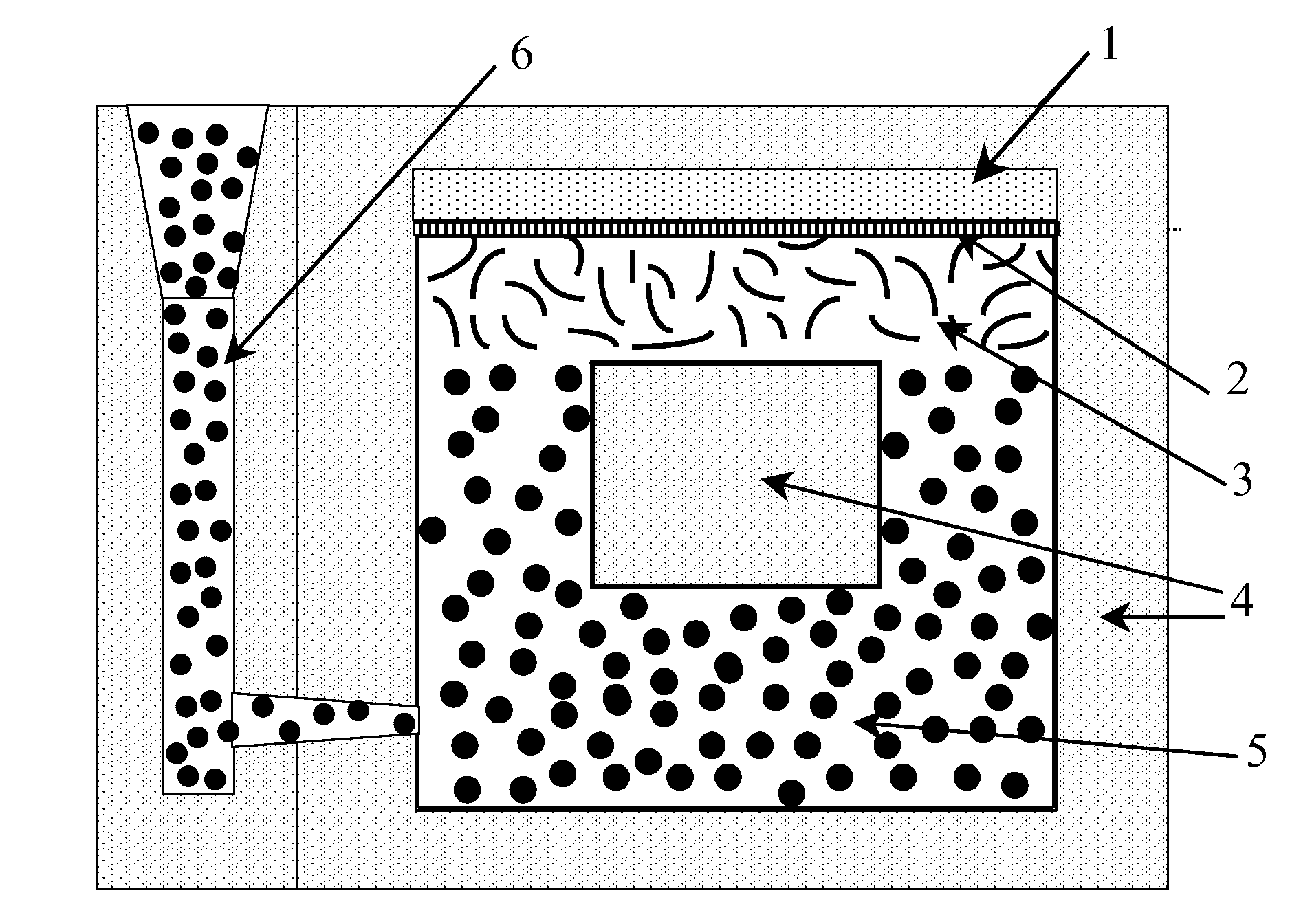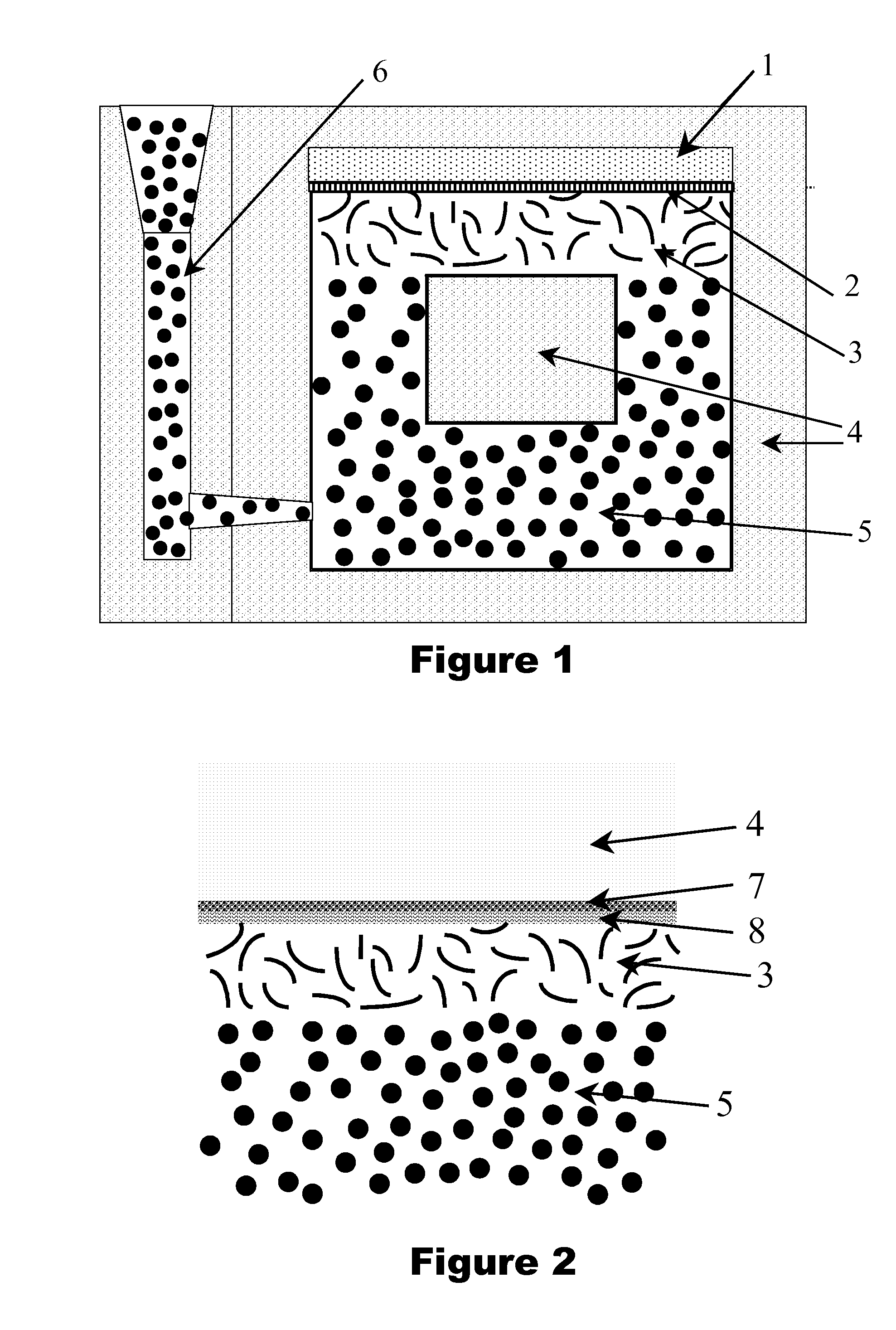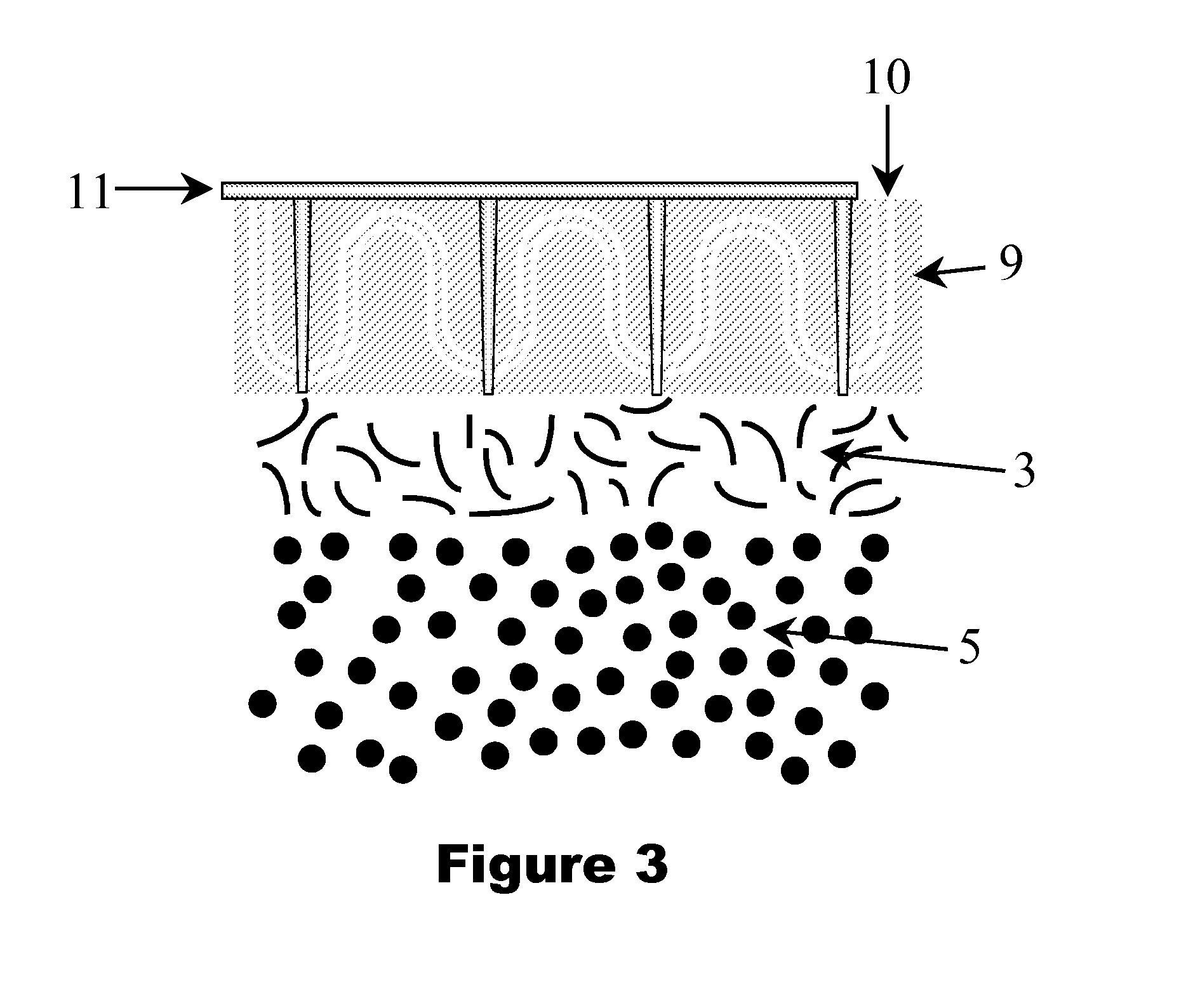In-situ graphite shape control for iron castings
a graphite and shape control technology, applied in the direction of machines/engines, mechanical equipment, cylinders, etc., can solve the problem of inability to produce localized graphite morphology control, and achieve the effect of excellent thermal conductivity of grey iron
- Summary
- Abstract
- Description
- Claims
- Application Information
AI Technical Summary
Benefits of technology
Problems solved by technology
Method used
Image
Examples
Embodiment Construction
In one embodiment, a cast iron article is made with localized graphite morphology control using in-situ sulfurizing agent addition. The in-situ sulfurizing agent addition is achieved with intentional latency to prevent the sulfurizing agent from dispersing throughout the cast iron article. Casting simulations have shown that cast iron metal remains fluid and has sustained internal mixing for over 40 seconds after pouring for articles with dimensions of ˜360 mmט270 mmט150 mm. This internal mixing requires that any localized graphite morphology control must begin only after internal mixing subsides. Therefore, sulfurizing agent addition must have intentional latency commensurate with the duration of internal mixing after pouring.
It is common to construct a mold for a cast iron article to include one or more internal cores. Traditionally, each core section is made with substantially the same materials and each section exhibits similar thermal conductivity. In the present disclosure, ...
PUM
| Property | Measurement | Unit |
|---|---|---|
| depth | aaaaa | aaaaa |
| depth | aaaaa | aaaaa |
| thickness | aaaaa | aaaaa |
Abstract
Description
Claims
Application Information
 Login to View More
Login to View More - R&D
- Intellectual Property
- Life Sciences
- Materials
- Tech Scout
- Unparalleled Data Quality
- Higher Quality Content
- 60% Fewer Hallucinations
Browse by: Latest US Patents, China's latest patents, Technical Efficacy Thesaurus, Application Domain, Technology Topic, Popular Technical Reports.
© 2025 PatSnap. All rights reserved.Legal|Privacy policy|Modern Slavery Act Transparency Statement|Sitemap|About US| Contact US: help@patsnap.com



